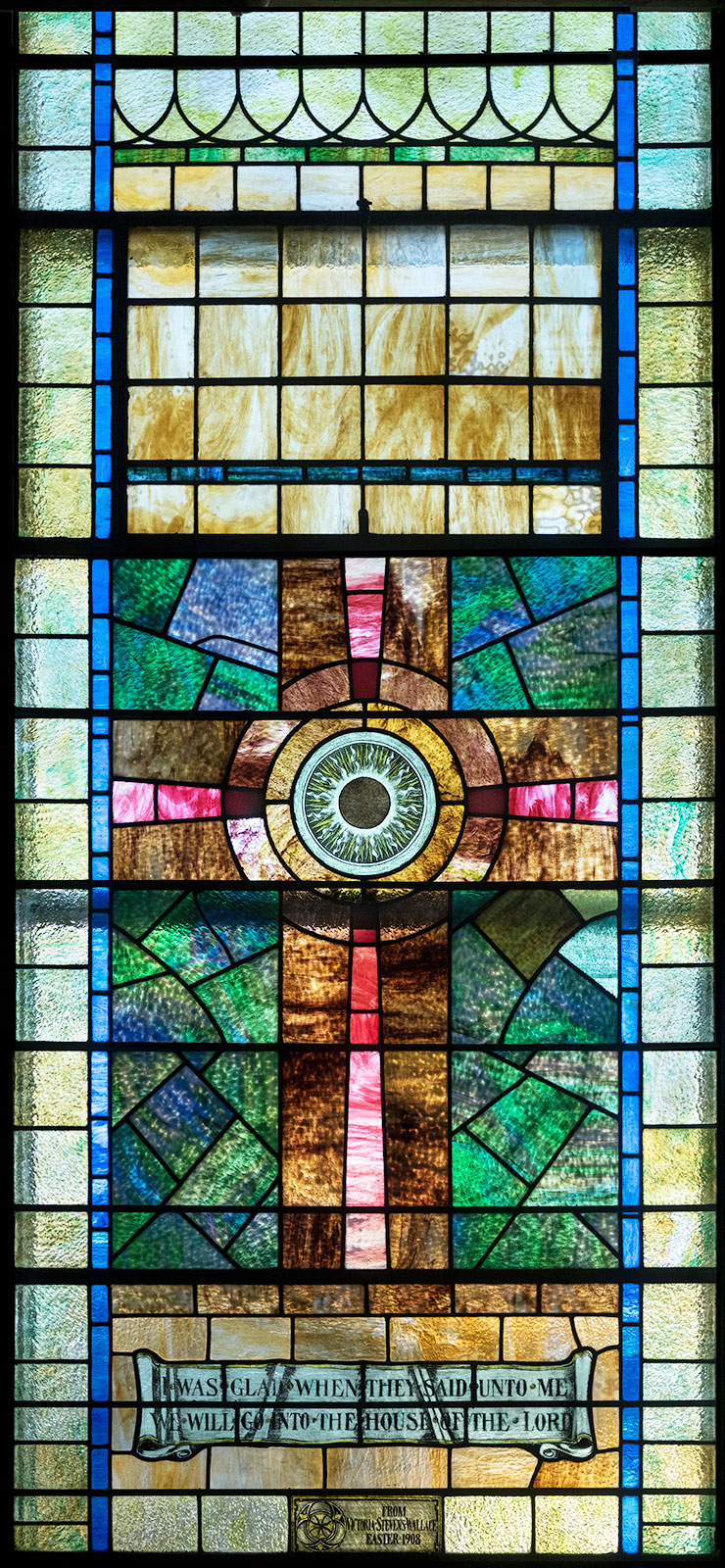
Subject: Sun
Inscription: “I Was Glad When They Said Unto Me, We Will Go Into The House Of The Lord”
Donor: Wellington and Victoria Stevens Wallace
Maker/Date: Charles E. Hogemen, 1908. Easter, 1908
Description – The verse is from Psalm 122:1
A Song of Ascents. Of David.
1I was glad when they said to me,
‘Let us go to the house of the Lord!’
2Our feet are standing
within your gates, O Jerusalem.
3Jerusalem—built as a city
that is bound firmly together.
4To it the tribes go up,
the tribes of the Lord,
as was decreed for Israel,
to give thanks to the name of the Lord.
5For there the thrones for judgement were set up,
the thrones of the house of David.
6Pray for the peace of Jerusalem:
‘May they prosper who love you.
7Peace be within your walls,
and security within your towers.’
8For the sake of my relatives and friends
I will say, ‘Peace be within you.’
9For the sake of the house of the Lord our God,
I will seek your good.
David wrote it for the people to sing at the time of their goings up to the holy feasts at Jerusalem. It comes third in the series and appears to be suitable to be sung when the people had entered the gates, and their feet stood within the city. It was most natural that they should sing of Jerusalem itself, and invoke peace and prosperity upon the Holy City, for it was the center of their worship and the place where the Lord revealed himself above the mercy seat. Possibly the city was not all built-in David’s day, but he wrote under the spirit of prophecy and spoke of it as it would be in the age of Solomon; a poet has license to speak of things, not only as they are, but as they will be when they come to their perfection. Jerusalem, or the Habitation of Peace, is used as the keyword of this Psalm, wherein we have in the original many happy allusions to the salem, or peace, which they implored upon Jerusalem. When they stood within the triple walls, all things around the pilgrims helped to explain the words which they sang within her ramparts of strength. One voice led the Psalm with its personal “I, ” but ten thousand brethren and companions united with the first musician and swelled the chorus of the strain.
David’s heart was in the worship of God, and he was delighted when he found others inviting him to go where his desires had already gone: it helps the ardour of the most ardent to hear others inviting them to a holy duty. The word was not “go, “but “let us go”; hence the ear of the Psalmist found a double joy in it. He was glad for the sake of others: glad that they wished to go themselves, glad that they had the courage and liberality to invite others.
Symbol – The Sun is symbolic of Christ. It is also a symbol of truth From the prophecy of Malachi 4 -“But unto you, that fear my name shall the Sun of righteousness arise with the healing in his wings.” Sun and moon are used as attributes of the Virgin I Mary, referring to the “woman clothed with the sun, and the moon under her feet’ (Revelation:12:1. Sun and moon are often represented in scenes of the Crucifixion to indicate the sorrow of all creation at the death of Christ.
Techniques – The Wallace windows use similar glass around center symbols arranged in five rows of stone with the central theme in the middle. Surrounding the symbol are two concentric circles of stones. Within each row are different shapes of glass. The effect is traditional without any special treatment of the glass or painting.